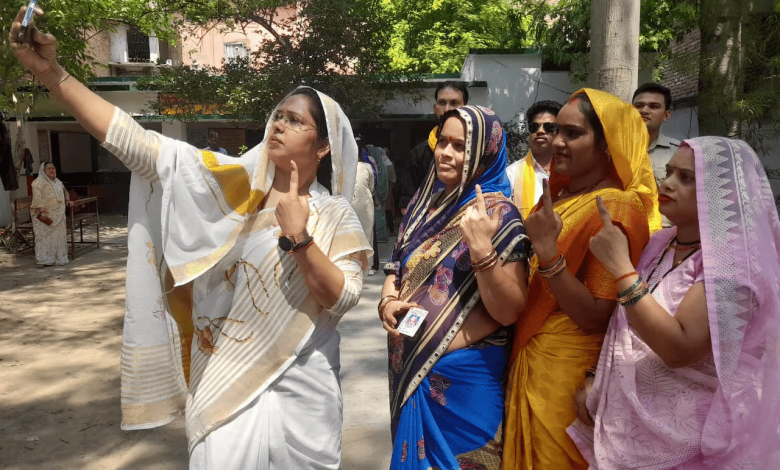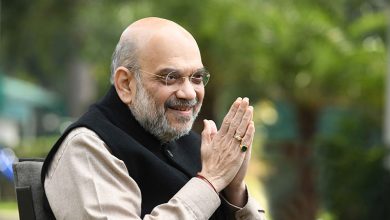58% of New Voters After Lok Sabha Polls Are Women

The political landscape is changing in ways we haven’t seen before, and one of the most fascinating trends is the rise in women voters. After the recently concluded Lok Sabha elections, (Lok Sabha polls) 58% of the newly registered voters in the district were women. This surge could be a crucial factor in the upcoming Assembly elections. Women are no longer just passive participants in political discussions; they are actively registering, showing up to vote, and influencing key decisions. Let’s explore the reasons behind this trend and its potential impact.
The Surge in Women Voters: A Game Changer
As of October 15, the district had 44,94,784 registered voters, an increase from the 42,72,366 voters before the Lok Sabha elections (Lok Sabha polls) held in March. Out of the 2,22,418 new voters, a staggering 1,29,782 are women, making up 58.30% of the new registered voters. This trend is consistent across both rural and urban areas, signaling a growing enthusiasm among women to have a say in political matters.
Why the Surge?
So, what’s driving this surge in women voters? A mix of factors, really. Women are becoming more aware of their rights and are eager to make their voices heard. Moreover, initiatives like the ‘Mukhyamantri Majhi Ladki Bahin Yojna’ have created strong incentives. This monthly financial support scheme specifically targeted towards women not only helps financially but also fosters a sense of independence and empowerment.
Breaking Down the Numbers
In the six constituencies within the city, 82,872 of the 1,42,717 newly registered voters are women, which is 58.06%. The remaining constituencies in the district recorded 46,910 women out of 79,710 new voters, contributing 58.86% to the total. These numbers reflect a significant demographic shift.
The Impact of Mukhyamantri Majhi Ladki Bahin Yojna
The state government’s active promotion of the ‘Mukhyamantri Majhi Ladki Bahin Yojna’ has been instrumental in this increase. This scheme transfers money directly to women, boosting their financial independence and encouraging them to participate in the democratic process. The fact that the government is targeting women as a key demographic through such initiatives could have a profound impact on election outcomes.
Women Empowerment at the Grassroots Level
This financial support isn’t just about the money. It’s about giving women the freedom to make choices—choices that were often out of their hands in the past. By helping women step outside their traditional roles, this program is enabling them to become more involved in community and policy matters.
Urban vs. Rural: A Uniform Trend
While there may be differences in lifestyle and access to resources between urban and rural women, this voter registration trend cuts across both areas. In urban constituencies, 58.06% of new voters are women, and in rural constituencies, that figure is 58.86%. It’s clear that regardless of where they live, women are taking an active role in shaping their futures.
A Changing Society: Women Stepping Out of Traditional Roles
This data signals a major cultural shift. More and more women are stepping out of their traditional roles to engage in public and political life. The growing awareness and sense of responsibility among women are paving the way for a more balanced and inclusive society.
Will Women Decide the Election Outcome?
The real question is: Can this increase in women voters change the outcome of the Assembly elections? With more women registering and showing an eagerness to vote, the political dynamics are likely to shift. Women, often seen as silent voters, now have a larger share in the voter pool, and their collective voice could make a significant difference in close races.
The Enthusiasm to Participate
There’s an undeniable energy among women to get involved in the voting process. It’s not just about showing up at the polls but about being part of the larger political dialogue. More women are attending rallies, engaging in discussions, and keeping themselves informed about key policies that affect their lives.
Why Women’s Votes Matter More Than Ever
In an election, every vote counts. But women’s votes have a unique significance, especially when they make up the majority of new voters. They bring different priorities and concerns to the table—issues like healthcare, education, child welfare, and domestic violence, which are often overlooked in male-dominated political discussions.
The Role of Women in Policy Change
With more women voters, we could see a greater focus on policies that directly affect women’s lives. Issues that might have been sidelined in previous elections could now take center stage, simply because of the number of women making their voices heard.
Could This Lead to More Women in Power?
Another interesting angle to consider is how this surge in women voters could affect the number of women running for office. More women in the electorate could inspire more women to contest elections, creating a ripple effect in political representation.
Encouraging Female Leadership
Political parties might also start fielding more female candidates to appeal to this growing voter base. After all, if women are voting in larger numbers, they are likely to support candidates who represent their interests—leading to a potential increase in female leadership in local and national politics.
The Long-Term Impact
This trend of women stepping into the political arena isn’t a one-off phenomenon. It’s part of a larger movement towards gender equality and empowerment. The impact of this surge in women voters will be felt not just in the upcoming Assembly elections but in future elections as well.
Building Momentum for the Future
As more women become politically active, we can expect to see changes in the kinds of policies that are prioritized. Women’s issues, which were often pushed to the back burner, will likely gain more prominence, leading to long-term societal benefits.
The surge in women voters after the Lok Sabha elections (Lok Sabha polls) is more than just a statistic. It’s a sign of the changing times, where women are taking control of their destinies and playing an active role in shaping the country’s future. With 58% of new voters being women, the upcoming Assembly elections (Lok Sabha polls) could witness a shift in the political narrative, driven by the power of female voters.
1. Why are more women registering to vote?
Women are becoming more aware of their rights, and government schemes like the ‘Mukhyamantri Majhi Ladki Bahin Yojna’ are encouraging them to participate in elections.
2. How does the ‘Mukhyamantri Majhi Ladki Bahin Yojna’ affect voting?
This scheme provides financial support to women, making them more independent and likely to engage in political activities, including voting.
3. Are urban and rural areas seeing the same trend in women voters?
Yes, both urban and rural areas are witnessing a similar trend, with around 58% of new voters being women in both regions.
4. Can women voters change the election outcome?
With 58% of new voters being women, they have the potential to significantly influence the results of the upcoming Assembly elections.
5. Will we see more women candidates in the future?
The increase in women voters could inspire more women to run for office, potentially leading to greater female representation in politics.










